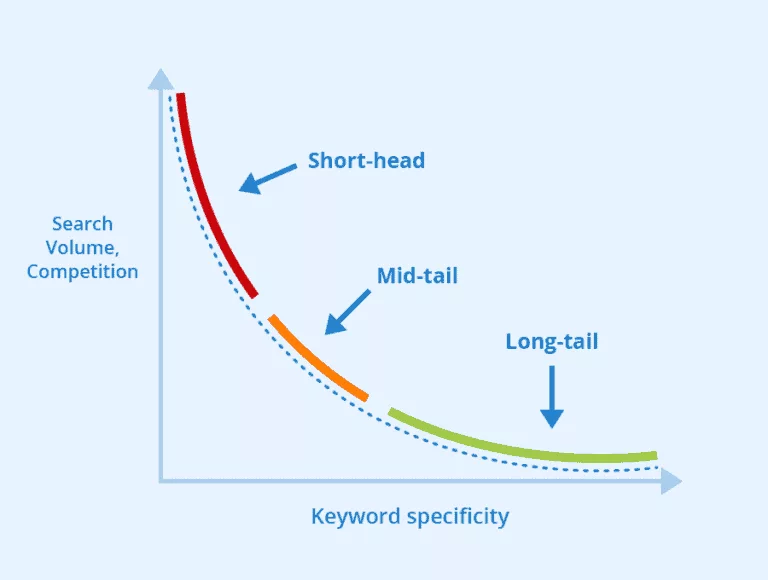A website is a powerful way to establish your brand, communicate your message, and reach your audience. By understanding some fundamental design principles, you can make your website more visually appealing and more functional. To design a good website, it’s important to consider how people will use it and which features are important, for this you’ll need to understand your audience, their wants and needs and how you can go above and beyond to provide them with the perfect product or service.
Why is it important to have a website?
The World is becoming increasingly connected and there are numerous opportunities to create your own online business. Not only do you have a new way of communication with your audience but your business could grow and prosper, if you can provide it with a strong online presence.
2.14 Billion Consumers Shop Online
Statista, 2021
Staista’s February 2021 survey found that 2.14 billion consumers around the world shop online, meaning if you aren’t advertising your products or services online, you could potentially be missing out on a whole pool of leads that simply haven’t found your business.
Having a website can give you the competitive edge to stand out from the crowd, if your website can engage it’s online browsers, chances are the customers will remember your business and choose to visit your online store again.
Ultimately the most important reason to have a website is to provide your customers with another way of connecting with you and your business.Having a website not only provides another way for your customers to find you, another payment method & also another form of contacting you directly.
So if you’re thinking about having a new website, take a look at our helpful tips & advice on how to achieve a high-performing website that converts traffic & ranks well.
What Qualities does a good website need to have?

There are many important aspects to consider when developing a website, but in order to be able to identify how it functions and will work for a certain type of audience, you should start with the basics. These are the essentials and should be considered for every site, no matter what type of website you’re creating, be it a blog, e-commerce or simple local website:
The Content
For the design of a website to be successful, the content must be in place. The content of your website, the words that are used to inform the customer of the product or service, will dictate how successful your website is. Take your time to understand the audience and write about your ideal customer, their wants, needs, and what you can provide to them, Customers don’t want to be confused with words, they want to be explained to, tell your customers why your business is different, what you can offer that others can’t and how you are ultimately their best choice.
The Navigation
Again, your website shouldn’t confuse it’s users, you need to create a website that the customers you attract will be able to use it effortlessly. Users should be able to find what they are looking for without confusion, they shouldn’t feel like your website is a maze, or attempting to hide something.
You should visit your website pretending to be a customer, is everything easy to find? can you get from A to B to C easily? if not, you need to change something.
The Functionality
Users typically have an expectation of how they’d like your website to feel before landing on it, they don’t want it to be confusing, or too far from the norm.
Example
If it’s a restaurant website they expect to be meeted with a menu, with images of the food and with opening hours & contact information. However if it’s a real estate website they’ll expect different functionalities, they’ll expect to be able to search for specific areas/ requirements.
Therefore having specific functionalities that relates to your business and provides the customers with the experience and engagement they require is a necessity for websites nowadays. If you don’t provide the customer with the answer to their question, they’ll look elsewhere.
Fundamental principles of website design

The fundamental principles of web design are established by the UX community and highlighted by the MIT Web Design Guidelines. Although these principles are constantly evolving, they offer valuable insight into how to design a good website.
Page Layout and Width
This is where the most emphasis is put on screen width. A responsive web design ensures a website will always look good on any mobile device. Why size matters Your website is a marketing tool and must reflect this. Don’t use your website as a place to advertise yourself, rather use it to show your audience who you are and what your company is all about. Ask yourself: “what’s the best way to get my message across?” Is it through text, social media, imagery, video, audio?
Layout can also include the way in which your consumers will scan & read your content, for example using F-Shaped Pattern Reading, which is the most common format a website follows, eye tracking studies suggest that most web-users will look at the top left area of the screen, scanning downwards.
Use visual hierarchy for highlighting the important aspects of your site – meaning using more dominant colours, fonts & sizes to draw attention to the main message of your site.
Pay attention to your load time – this is arguably one of the most important factors of a website, waiting for a website to load can cost you your customers. Optimising multiple different aspects of your website can help you minimise load time, using page insight speed can help you understand which pages on your site are responding slower than others, and will also offer tips on how you can change the aspects to perform better.
Usability across all platforms
Mobile friendliness is key for web design nowadays. Your website will not survive if users are not able to use it in the palm of their hands. Consider building your website with a responsive layout that can adjust to different screen sizes, from desktop, tablet to mobile. You don’t want your users to experience unusable pages.
How do you get better visibility for your website?

A visually unappealing site is less likely to be found by the right people, so your website’s design must be thoughtfully considered when developing it. Once you are confident with the overall aesthetic, design and functionality of your website, it’s time to get users. Getting users to your site can be tricky at the start, Google will not trust your website straight away to rank for high-search volume keywords.
Keywords are the important words associated with your product or service.
Example
If you are a window salesman your keywords will be windows, double glazing, new windows.
However your new website will not have enough trust with google to rank highly for those keywords, therefore you’ll need to begin looking for smaller volume search words to begin getting traffic and visibility for your website. Try local keywords such as ‘New Windows Merthyr Tydfil’ as an example, the search volume will be lower and thus might become easier to rank for.
Visibility for your site will come with time and trust from google, whilst it may take a few months to get the right level of trust to appear on higher volume search results, there’s a few things you can do to improve trustworthiness, this includes slight optimisation, content development and even adopting an SEO strategy
How do you make your website more trustworthy?
Don’t overcrowd with ad’s
When you want to appear as a helpful and trustworthy website, one of the best things to do is keep your website clean and uncluttered. Having too many ads may give off an unprofessional look, meaning google might think your website is Spam.
Showcase reviews
If you have previous customer reviews it’s always great to showcase them on your website so that future customers can see you are a reliable and trustworthy website / company.
Use citations & Backlinks to help your trustrating with google
Signing up to local directories to list your business is an ideal way of gaining more trust, the more google can see you online the more it’ll believe that you are a professional in the field. Having your website listed in different directories can help Google understand that you are a relevant business and they will then be able to suggest you to potential leads.
What Makes good website content?
The focus of a website’s content should always be on user friendliness. When people are browsing your website, the bulk of their attention will be on the product or service that you are trying to sell. You want them to have a positive experience and be able to quickly find what they are looking for, without having to struggle to find what they are looking for. When you create website content, you should ensure that it provides the user with the necessary information they require to make a decision as quickly as possible. A user’s decision is often made quicker by knowing exactly what they are going to be buying, which is why research shows that 85% of people visit a site only because they know what it sells.
Content builds relationships. Relationships are built on trust. Trust drives revenue.”
Andrew Davis, Author & Keynote Speaker, Monumental Shift
Content can be anything that adds value to the readers experience, you want to provide knowledge without confusing them, and ultimately help answer any questions they may have, users who feel like you have helped them may become returning users, and potential sales.
What keeps users engaged on a website?
When you’re creating a website, your goal should be to ensure that the content people are consuming is as useful as possible. If your site is good enough, users will stick around on it and interact with it for as long as it takes to complete what they’re trying to accomplish. It’s also worth remembering that, regardless of whether you’re running an ecommerce business, a public service, a community resource, or anything else, your website is where you get your first impressions. So make sure it’s a pleasure to spend time on!
You need to provide a service on your website that users cannot get from your competitors, this doesn’t always have to be a completely different service, often it can just be a better improved service.
Example
you could offer a live chat feature, whilst your competitors offer this, your customer service is better and therefore you offer a better service. Alternatively if you are an online clothes retailer you could offer online sizing help, whereas your competitors do not offer this at all. Always look for where you can go above and beyond for the customers.
Colour Principles

Your website’s colour scheme can be one of the most important elements of your website design. While you should be mindful of the colours you choose for any given website, your website’s colour scheme should be well balanced with a cohesive, harmonious colour palette. You want to avoid using colours that clash or clash with each other. This is where you can get some ideas from what you already know about your audience. It’s important to consider colours and patterns that your audience will relate to, and also associate with your company.
It’s also important to keep the colour palette across the whole of the site, you don’t want one page in a bright yellow, the next a dark blue and the last a neon pink.
Images & videos on a website
Images are a great way to create a visual link and to entice people to click and explore. Creating your website with a solid user experience in mind means that users should be able to click and quickly find what they’re looking for, instead of having to wade through a lot of pages with generic content. Your images and text should be clear and concise, just like your website. Your website design will also need to reflect your company’s visual brand and personality, which will help your customers find your services. A strong and cohesive brand needs to be visualized on the internet, and if you don’t, your website will simply be a meaningless compilation of text and information.
Having images on the site can be anything from pictures of your products, your building or even your team, you can also do this through videos introducing your brand, beliefs and members.
Conclusion
To create a powerful brand in the digital world, you must know your audience and how to create the perfect product or service tailored to them.
Understanding that there isn’t one thing that will improve your website, but rather a checklist of things that can be improved, optimised & added will set you on the right tracks.
By understanding these principles, you can increase your conversion rate, lead traffic and increase sales

